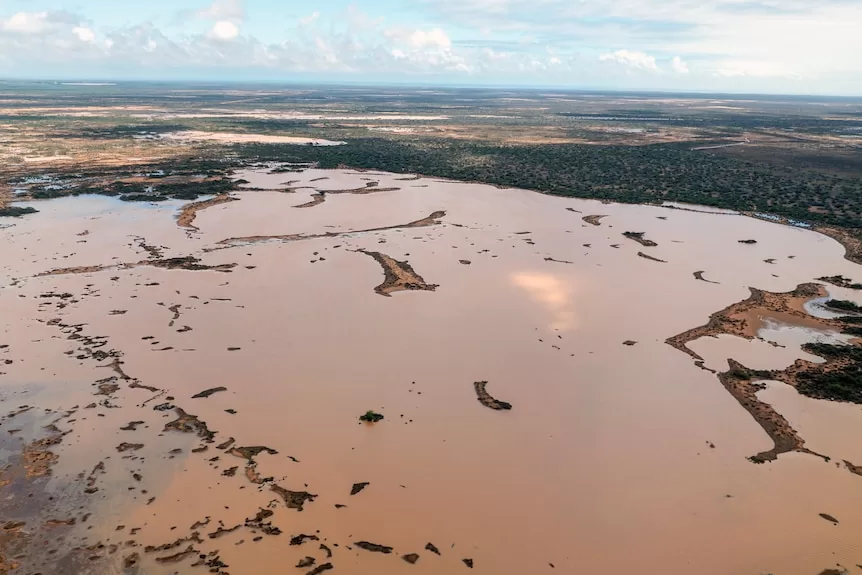Authorities are celebrating a “best case scenario” as ex-Tropical Cyclone Lincoln crossed the West Australian coast with a “moderate impact”, but some fruit growers are dealing with severe damage.
The system hit the Gascoyne town of Carnarvon north of Perth on Saturday night, bringing 78 millimetres of rain to the town and strong wind gusts of up to 76 kilometres per hour in the broader region.
While the rainfall has been a “drought breaker” for one pastoralist, it has caused heartache for a grower whose crop was damaged by the storm.
Su Tran said he spent about $30,000 in recent weeks preparing soil and plastic for tomato, capsicum and cucumber seedings.
They will have to be ripped up as a result of the weekend rain.
Mr Tran said recent hot weather and last night’s heavy rainfall had caused about $40,000 worth of damage to his watermelon crop.
“I don’t know what to do because of the weather … the weather has been hot, last week was hot, 50 degrees and you see I have avocado there – all burnt,” he said.
“Watermelon the same too; in the heat they burnt up.
“And some of the watermelons in the back … after the rain I’ll pick them, but I don’t know now if they’re good or not because when you get heavy rain there’s damage inside.”
While the recent weather had taken a toll, Mr Tran said he was determined to persist as a grower.
“I feel sad now, because here I’ve had problems. Every one or two years I have problems. It’s very hard for the growers like me,” he said.
“I keep growing because my family is here and the kids are at school here.”
The weather system is expected to track south-east over western parts of the Gascoyne and adjacent parts of the Central West district throughout Sunday.
For some pastoralists, who have been dealing with one of the worst droughts on record, the system has brought much-needed relief.
Caroline Thomas from Marron Station, south-east of Carnarvon, said the property received 108mm of rain, nearly double the 62mm it had seen in total since January last year.
“It’s a drought breaker, it’s amazing news … we’ve really needed it,” she said.
“We’ve been having to hand feed stock and [have been] losing a number of sheep, and some goats.
“We’ve got about 100 cattle and they’ve been looking a bit skinny too.”
Further east, pastoralists around Gascoyne Junction largely missed out on the rain, with local gauges recording small totals between 0 and 5 millimetres.
The Bureau of Meteorology (BOM) had previously forecast that the remnants of ex-Tropical Cyclone Lincoln would intensify to cyclone strength over sea, but this advice was downgraded.
Residents had been warned to prepare for potentially dangerous conditions and travellers told to evacuate before the tropical low arrived.
The Department of Fire and Emergency Services (DFES) said the community was well prepared, and residents would be happy to see rain after a prolonged spell of extreme heat and dryness.
Deputy Incident Controller Elsa Alston said DFES crews surveyed the town on Sunday morning with “manageable and moderate” impacts recorded and some localised flooding.
“Best case scenario last night, we got some rain, which the community is obviously going to be quite pleased about,” she said.
“We couldn’t have asked any more of the community. People have been proactive; they’ve been very responsive to messaging and that’s why we’re standing here … with smiles on our faces.”
BOM duty forecaster Luke Huntington said ex-Tropical Cyclone Lincoln was a relatively small system, meaning it was susceptible to small changes hindering its re-development into a cyclone.
“There was quite a bit of dry air coming into the system that really prevented it from developing into a tropical cyclone,” he said.
